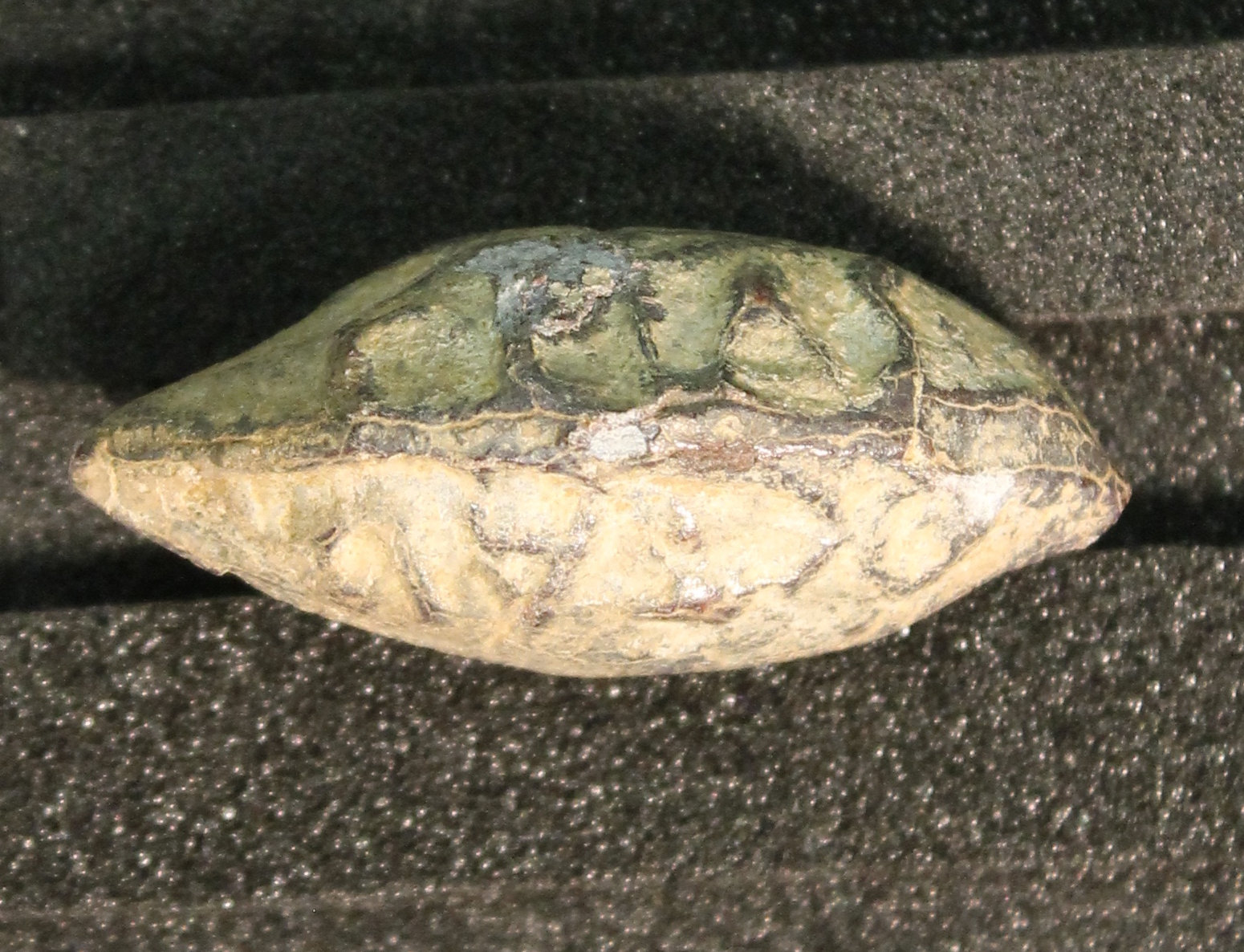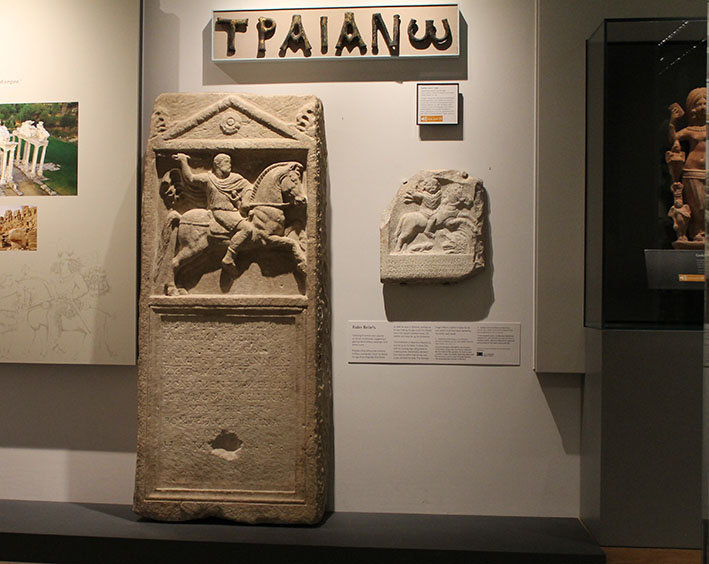Last week we challenged our Twitter followers to read this inscription:
This is one of our sling bullets from the battle of Perusia. Last year we explored how Roman soldiers would write messages to the enemy on their sling bullets. Experts have found this inscription difficult to read, and a number of possible interpretations have been proposed over the years. Thanks to close examination by the project team, we have come up with a new reading that is more plausible and far ruder.
You can find out the answer from our latest podcast (warning: strong language in both Latin and English):
There were lots of great guesses. @JAugust7 rightly guessed that the message was a rude one, and makes the plausible suggestion that it was about Fulvia, one of the major figures in the siege of Perusia.
Something mean about Fulvia? https://t.co/a03tp7oS1o
— Julia August (@JAugust7) December 14, 2016
@llewelyn_morgan was the runaway winner, correctly reading the last word as OCTAVI, and then going to the Ashmolean in person to see the rest:
@cornwell_hannah @LoveArchaeology @wmarybeard @holland_tom C Caes Octav?
— Llewelyn Morgan (@llewelyn_morgan) December 15, 2016
@cornwell_hannah @AshmoleanLatin Well I'm shocked, I tell you, shocked! But still foxed by the Latin. It doesn't read FELLAS, does it?
— Llewelyn Morgan (@llewelyn_morgan) December 16, 2016
Special mention goes to @perlineamvalli:
A sort of 'whssshhhhtttt!' as it goes past your ear, unlike the 'weeeeeee!' of the Burnswark shot 😉 https://t.co/boLuue9Qw7
— Per Lineam Valli (@perlineamvalli) December 16, 2016
for making us laugh. You can find out about the whistling sling bullets from Burnswark here. They are a great example of how sling bullets could be a sophisticated psychological weapon, as well as doing physical harm.
You can see this bullet in our new displays in the Ashmolean’s Reading and Writing gallery.


